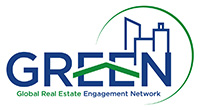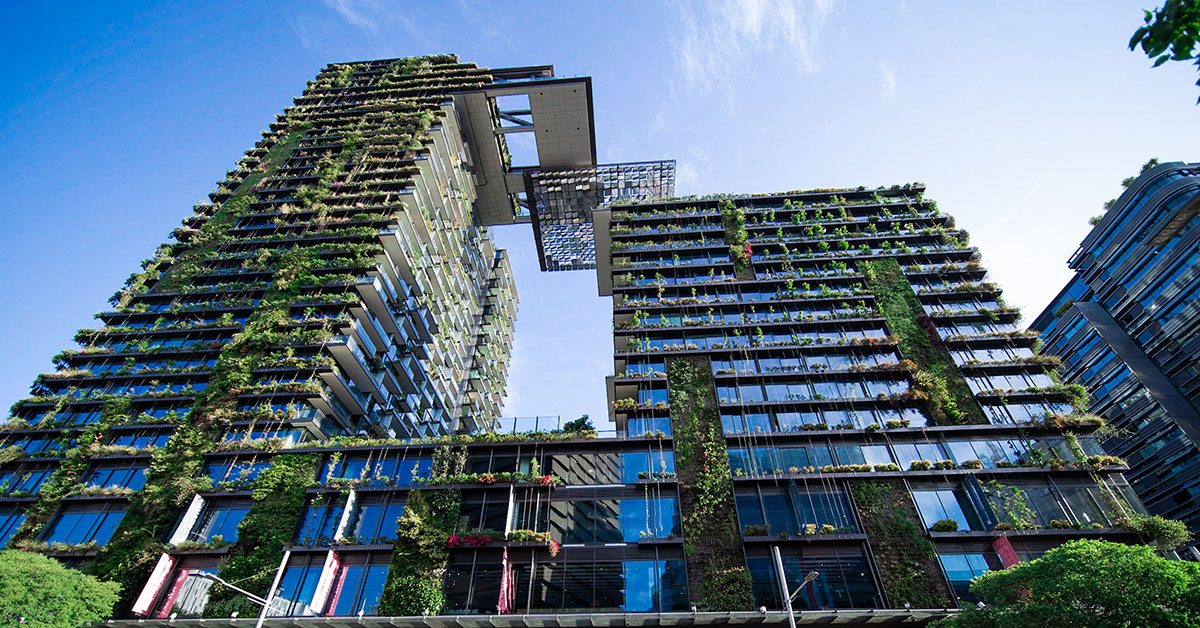Key takeaways webinar: Unlocking Climate Insights in Real Estate
On October 3, GREEN organized the second webinar of the year. Attracting over 140 registrations, this webinar was another success. During the webinar, our panelists explained how investors assess the environmental performance of real estate companies and demonstrated how GREEN’s investor members engage with REITs to accelerate progress toward the Paris Climate goals.
Below are the key takeaways from the webinar. To watch the webinar recording, please click here.
Four pillars of GREEN’s Investor Statement -Maaike Hof, GREEN-
In the first part of the webinar, our host, Maaike Hof, demonstrated what GREEN is and how our work is anchored by the requests in the Investor Statement, which is signed by all our members. The four pillars we focus on are:
- Disclosure
- Governance
- Framework and target setting
- Certified data and Asset-level plans and transition pathways
More information in the Investor Statement
Properties of superior quality experience lesser impact from climate transition -Danny Ismail, Green Street-
The second part of the webinar was led by Danny Ismail, Co-Head of Strategic Research at Green Street, focusing on the ‘E’ (Environmental) in Real Estate. Danny Ismail explained Green Street’s approach to underwriting climate and environmental factors in listed real estate companies. Their primary focus is on the Environmental (E) and Governance (G) issues, which hold the most significance in real estate underwriting. The ‘E’ factor stands out significantly among property sectors, as the difference in greenhouse gas emissions is generally wider across property sectors than within.
Green Street has discovered that higher-quality properties are less impacted by climate transition. These properties are typically well-maintained, in compliance with environmental regulations and expectations.
Shift from decarbonization to physical risk due to high-interest rates
Given the high-interest rate, the priority has temporarily shifted to physical risk rather than decarbonization. Danny also noted variations in emissions between listed and private real estate in Europe and the US. Green Street estimates that environmental impacts will cost property owners about 1-3% of Net Operating Income (NOI) per year, with a 10 to 20 basis points (bps) impact on Internal Rate of Return (IRR). In the current high-interest rate environment, decarbonization isn’t the primary driver for stock selection. There is now more attention on physical climate risk, with market perspectives evolving following major disruptions in insurance, particularly in US states like Florida and California.
Translating Net Zero commitment to align with climate goals -Uma Moriarity, CenterSquare & Ethan Gilbert, Prologis-
The third part of the webinar demonstrated how a GREEN investor member engages with a REIT to accelerate progress toward the Paris Climate goals. The investor engagement dialogue was led by Uma Moriarity from CenterSquare and Ethan Gilbert from Prologis.
One of the highlights of Prologis’ climate risk strategy is its commitment to achieving Net Zero by 2040. Uma, therefore, asked Ethan about this commitment and its practical implications.
Lower energy consumption results in scope 3 emissions downstream
Ethan Gilbert explained how Prologis translates its high-level commitment to achieving net zero by 2040 into actionable data for assessing targets. Prologis, primarily a triple net lease landlord, places significant emphasis on tenant energy consumption, which results in scope 3 emissions downstream. The company’s data focus is extensive in this regard. Prologis aims to assist its customers in decarbonizing their operations, improving energy efficiency, realizing cost savings, and transitioning to renewable forms of power. Their goal is to help customers align with their overarching commitment to achieving Net Zero by 2040.
Prologis then explained how they assess the business case for achieving net zero with existing assets. Their approach to existing investments mirrors their development pipeline, ensuring that building improvements support decarbonization. Prologis emphasized that regulation plays a significant role in driving the financial business case. Furthermore, Prologis has observed tenants choosing landlords who can assist them in achieving goals related to LED lighting, installed solar capacity, building certification, and more.
Growing trend of electrification leads to higher electricity demand
Given that Prologis has not set an energy target, a crucial pillar in decarbonization, Uma’s next question focused on the role of energy intensity reduction in Prologis’ net-zero plans.
The portfolio primarily consists of triple net leases, so Prologis can only make significant changes when leases are renewed. Additionally, logistics customers are evolving and implementing more energy-intensive autonomous operations. The shift toward electrified buildings and electric fleet solutions is expected to increase the demand for electric power. Therefore, Prologis aims to ensure it can meet this growing demand for electric power while prioritizing renewable sources.
CRREM is one solution in the toolbox
Prologis sees CRREM as one solution in their toolbox for evaluating building performance. However, it is not the only indicator influencing their long-term building performance strategies and building lifespan considerations. They are collaborating with CRREM and ULI to ensure that tools like CRREM remain relevant in the markets they operate in.
Solar offer climate change opportunities for Prologis
Prologis sees a strong business case for decarbonization by leveraging their real estate assets. They are exploring options such as onsite solar, battery storage, electric vehicle charging, and other methods to assess building sustainability. Prologis explained that while they believe they can play a significant role as renewable energy becomes the predominant source, understanding the complexities of the grid, storage needs, and the requirements of utility companies is part of the energy transition for REITs. The electrification of the economy, vehicles, and various aspects of the built environment introduces a new level of complexity to the grid.
Read the Q&A of this webinar?
During the webinar, there were several questions from the audience. To view all the Q&As, please here.
Call upon investors to collaborate and achieve real-world impact
GREEN is a not-for-profit collaborative engagement initiative for institutional investors, focusing on reducing climate risk in the real estate industry. GREEN members acknowledge the importance of collaboration to initiate change and maximize impact. We, therefore, call upon other institutional investors to join GREEN and work together towards a Paris-aligned real estate sector. Check the investor statement for more information.






